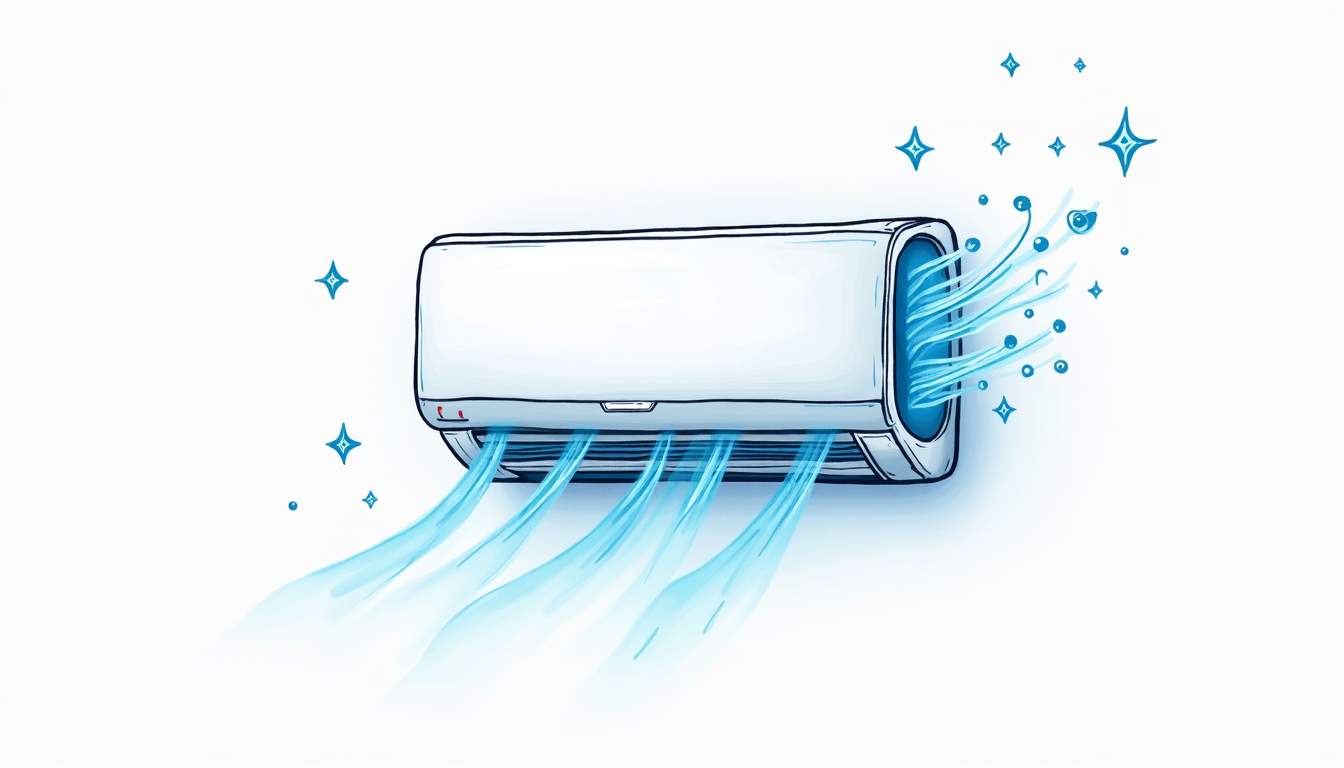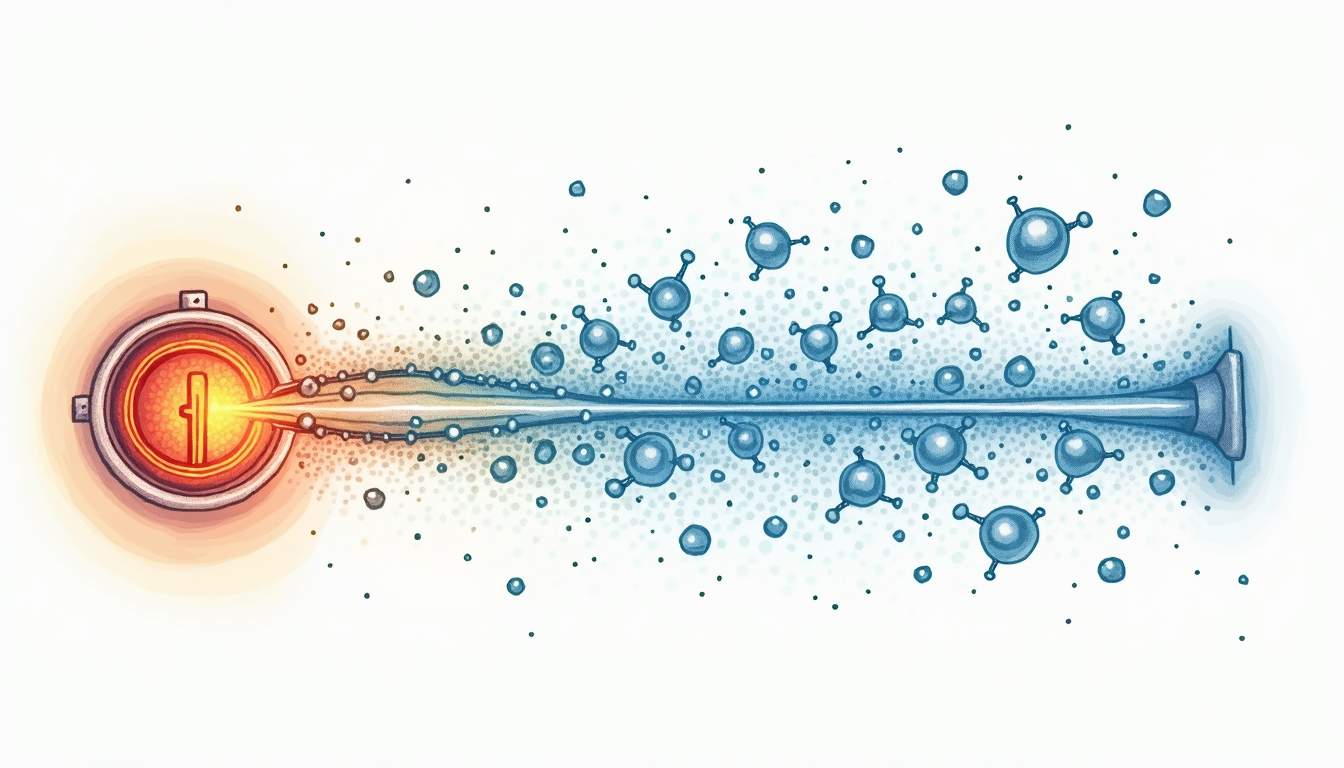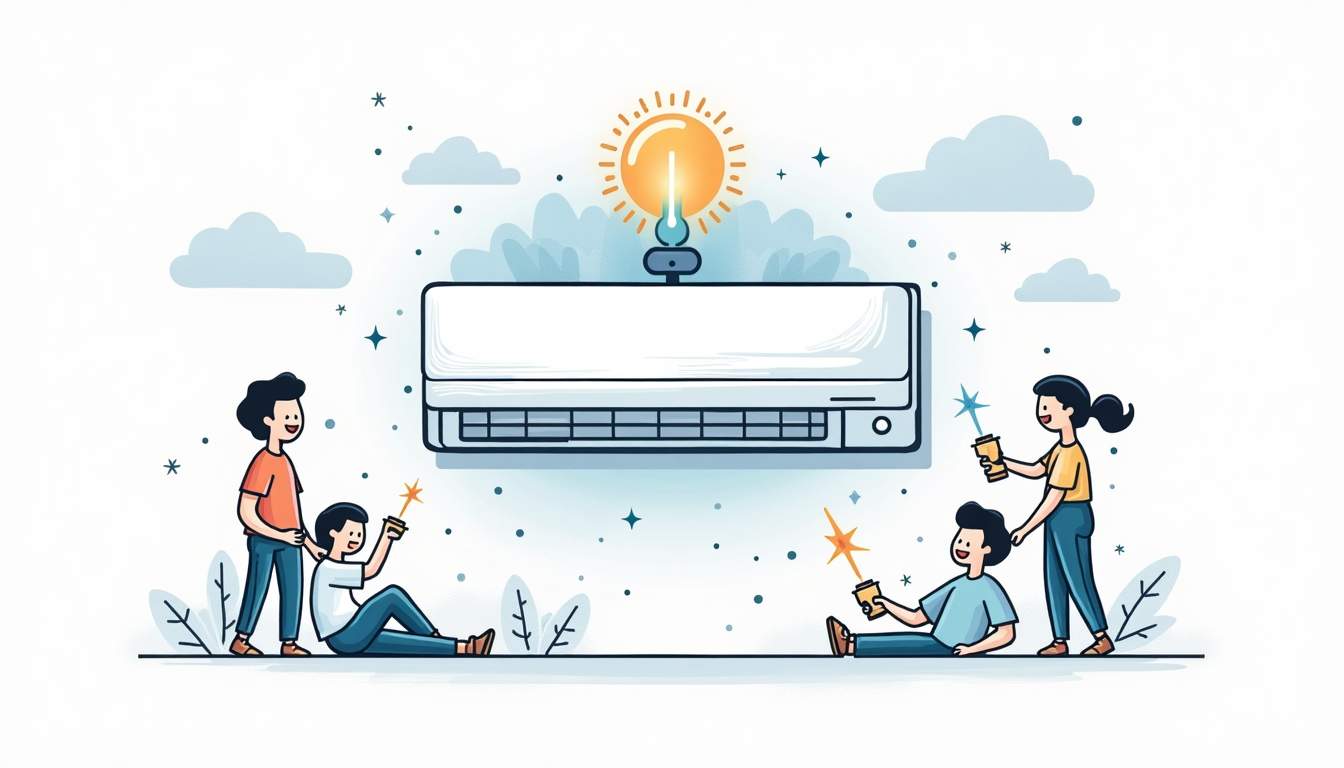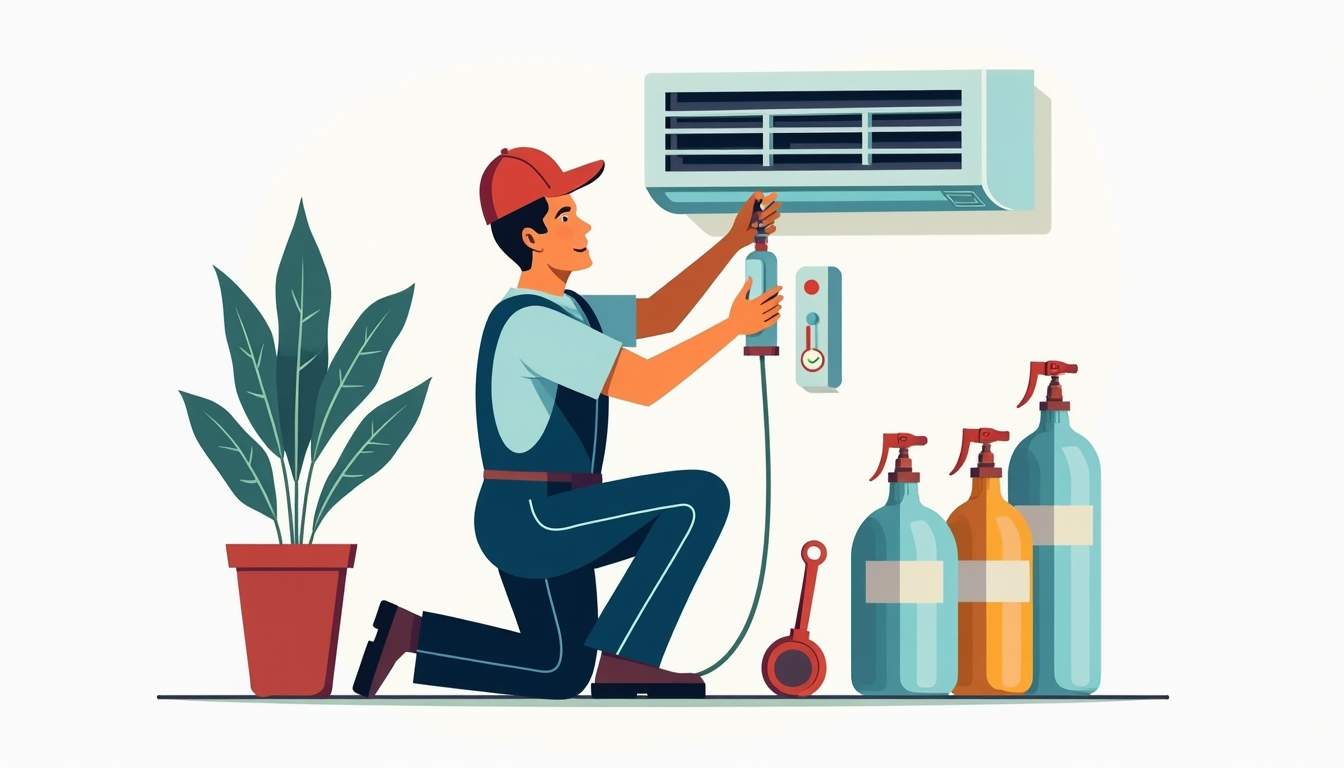
When the summer heat hits its peak, a well-functioning air conditioner becomes more than just a luxury—it’s a necessity. However, many homeowners and office managers overlook a critical aspect of aircon maintenance: the refrigerant gas level. Over time, the cooling efficiency of your air conditioner can decline, often due to low refrigerant gas. This is where a gas top-up comes into play, helping to restore your air conditioner’s performance and keep your space comfortably cool.
Understanding the Role of Refrigerant Gas in Air Conditioning
Refrigerant gas is the lifeblood of any air conditioning system. It is the substance responsible for absorbing heat from the indoor air and releasing it outside, effectively cooling the space. The process involves the refrigerant circulating through the aircon’s coils, changing from liquid to gas and back again, which facilitates heat exchange. This cycle is not only vital for maintaining a comfortable indoor climate but also plays a significant role in the overall energy efficiency of the system.

Without the correct amount of refrigerant, the air conditioner cannot efficiently absorb and expel heat. This leads to reduced cooling capacity, longer running times, and increased energy consumption. In some cases, the system may even freeze up or shut down entirely to prevent damage. Additionally, improper refrigerant levels can lead to environmental concerns, as certain refrigerants can be harmful to the ozone layer and contribute to global warming. Thus, understanding and managing refrigerant gas is essential not only for personal comfort but also for ecological responsibility.
How Refrigerant Levels Affect Cooling Efficiency
When refrigerant levels drop below the manufacturer’s recommended amount, the aircon’s cooling performance diminishes noticeably. You might observe that the air blowing from the vents isn’t as cold as it used to be, or that the unit struggles to maintain the desired temperature. This inefficiency not only causes discomfort but also increases electricity bills as the system works harder to cool the space. In fact, studies have shown that even a small drop in refrigerant levels can lead to a significant increase in energy consumption, making regular maintenance a smart investment.
Moreover, low refrigerant can strain the compressor, the heart of the air conditioning system, potentially leading to costly repairs or premature system failure. The compressor relies on the refrigerant to maintain proper pressure and temperature levels; without sufficient refrigerant, it can overheat and become damaged. Therefore, maintaining optimal refrigerant levels is crucial for both comfort and the longevity of your air conditioner. Regular checks by a qualified technician can help identify leaks or deficiencies early, ensuring your system runs smoothly and efficiently throughout the cooling season. Furthermore, understanding the type of refrigerant used in your system can also help in making informed decisions about maintenance and upgrades, as newer refrigerants are often designed to be more environmentally friendly while still providing excellent cooling performance. For professional assistance and reliable maintenance services, visit Aircon Servicing to ensure your air conditioning system remains in peak condition.
Why Refrigerant Gas Levels Drop Over Time
It’s a common misconception that refrigerant gas depletes naturally over time like fuel in a car. In reality, refrigerant is contained within a sealed system and should last the lifetime of the air conditioner. So, why do levels drop?
Leaks: The Primary Culprit
The most frequent cause of low refrigerant levels is leaks in the air conditioning system. These leaks can occur due to corrosion, physical damage, or faulty connections in the coils, pipes, or fittings. Even a small leak can cause a gradual loss of refrigerant, leading to diminished cooling efficiency.
Detecting leaks early is essential. Signs of a leak include hissing sounds, oily residue around fittings, or ice buildup on the evaporator coil. Professional technicians use specialized tools, such as electronic leak detectors or UV dye, to pinpoint the exact location of leaks.
Improper Installation or Maintenance
Sometimes, air conditioners are installed with incorrect refrigerant charge or suffer from poor maintenance practices. Overcharging or undercharging the system during installation can affect performance and cause damage. Regular servicing ensures that refrigerant levels are checked and adjusted as needed, preventing long-term issues.
The Gas Top-Up Process: What It Involves
Gas top-up, also known as refrigerant recharge, is the process of adding refrigerant to an air conditioning system to restore its optimal charge. This procedure is typically performed by certified HVAC technicians who have the tools and expertise to handle refrigerants safely and effectively.
Step 1: Inspection and Leak Detection
Before topping up the refrigerant, the technician inspects the air conditioning system for leaks or damage. This step is crucial because simply adding gas without fixing leaks will only provide a temporary fix. If leaks are found, they must be repaired before proceeding.
Step 2: Evacuating Old Refrigerant (If Necessary)
In some cases, the existing refrigerant may be contaminated or the wrong type. The technician will recover the old refrigerant using specialized equipment to ensure environmental safety. This step may not always be necessary if the system is simply low on charge but otherwise in good condition.
Step 3: Recharging with the Correct Refrigerant
The technician then adds the appropriate type and amount of refrigerant to the system, following manufacturer specifications. Using the correct refrigerant is essential, as different air conditioners require specific types for optimal performance and environmental compliance.
Step 4: System Testing and Calibration
After topping up, the system is tested to ensure it is cooling effectively and operating within safe pressure ranges. Adjustments may be made to optimize performance, and the technician will verify that no leaks are present post-service.
Benefits of Regular Gas Top-Up for Your Air Conditioner
Maintaining the correct refrigerant level through regular gas top-ups offers several advantages that go beyond simply cooling your space.

Improved Cooling Performance
A properly charged air conditioner cools your home or office more efficiently, providing consistent and comfortable temperatures even during the hottest days. This means you can rely on your aircon to deliver the relief you expect without struggle.
Energy Efficiency and Cost Savings
When refrigerant levels are low, the air conditioner works harder and runs longer to achieve the desired temperature. This increased workload leads to higher electricity consumption and inflated utility bills. A gas top-up helps restore efficiency, reducing energy use and saving money in the long run.
Extended Equipment Lifespan
Operating with insufficient refrigerant can cause undue stress on the compressor and other components, accelerating wear and tear. Keeping refrigerant levels optimal through regular maintenance and top-ups helps protect your investment by prolonging the life of your air conditioning system.
Environmental Benefits
Leaking refrigerant not only harms your aircon’s performance but also contributes to environmental damage, as many refrigerants are potent greenhouse gases. By repairing leaks and topping up gas responsibly, you help reduce your carbon footprint and support eco-friendly practices.
Signs You Need a Refrigerant Gas Top-Up
Recognizing when your air conditioner needs a gas top-up can prevent discomfort and costly repairs. Here are some common signs indicating low refrigerant levels:
Reduced Cooling Output
If your aircon no longer cools the room effectively or takes much longer to reach the desired temperature, low refrigerant could be the cause. This is often the first and most noticeable symptom.
Longer Running Times
When the system struggles to cool, it may run continuously without cycling off, leading to increased wear and higher energy bills. This inefficiency often signals a refrigerant issue.
Ice Formation on Coils
Low refrigerant can cause the evaporator coil to become too cold, resulting in ice buildup. This restricts airflow and further reduces cooling capacity.
Hissing or Bubbling Noises
Unusual sounds near the air conditioning unit may indicate refrigerant leaks. If you hear hissing or bubbling, it’s important to have the system inspected promptly.
Choosing the Right Professional for Gas Top-Up
Handling refrigerants requires specialized knowledge and equipment, as improper handling can be dangerous and illegal due to environmental regulations. It’s essential to hire licensed and experienced HVAC professionals for gas top-up services.

Certification and Experience
Look for technicians certified in refrigerant handling and air conditioning repair. Experienced professionals will accurately diagnose issues, perform leak detection, and ensure the correct refrigerant type and amount are used.
Reputation and Reviews
Check customer reviews and ratings to find reliable service providers. Positive feedback on professionalism, punctuality, and quality of work can guide your choice.
Transparent Pricing and Warranty
A reputable company will provide clear pricing upfront and offer warranties on their work. This protects you from unexpected costs and ensures confidence in the service quality.
Maintaining Your Air Conditioner Beyond Gas Top-Up
While gas top-up is vital for optimal cooling, it’s just one part of comprehensive air conditioner maintenance. Regular upkeep helps prevent issues and keeps your system running smoothly.
Clean or Replace Filters Regularly
Dirty filters restrict airflow and reduce efficiency. Cleaning or replacing filters every 1-3 months, depending on usage, improves air quality and system performance.
Schedule Routine Professional Servicing
Annual or biannual inspections by HVAC technicians can catch problems early, including refrigerant leaks, electrical issues, and worn components. Preventive maintenance saves money and extends equipment life.
Keep Outdoor Units Clear
Ensure the outdoor condenser unit is free from debris, leaves, and obstructions. Proper airflow around the unit is essential for heat dissipation and efficient operation.
Monitor System Performance
Pay attention to any changes in cooling effectiveness, unusual noises, or smells. Early detection of problems allows for timely intervention before they escalate.
Conclusion
Refrigerant gas is fundamental to your air conditioner’s ability to cool effectively. Over time, leaks or improper charging can reduce refrigerant levels, leading to diminished performance, higher energy costs, and potential system damage. A professional gas top-up restores the correct refrigerant charge, improving cooling efficiency, saving energy, and extending the life of your aircon.
By recognizing the signs of low refrigerant and scheduling regular maintenance with qualified technicians, you ensure your air conditioning system remains reliable and efficient year-round. In the heat of summer, a properly charged air conditioner is not just a comfort—it’s a critical component of a healthy, productive living or working environment.